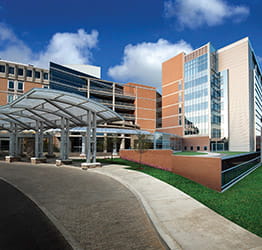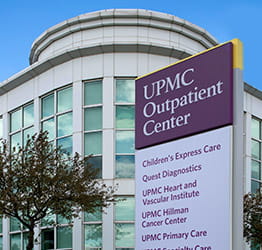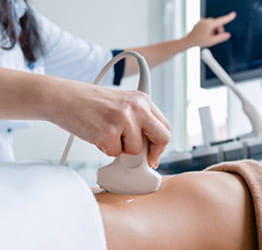Dural arteriovenous fistulas (dAVFs) are rare, abnormal connections between arteries and veins in the dura, the protective lining of your brain. Having a dAVF can increase your risk of life-threatening complications, including brain hemorrhage, which can lead to a stroke.
At UPMC, our neurosurgery experts offer a full range of nonsurgical, minimally invasive, and traditional open surgical procedures to treat dAVFs. After diagnosing your condition, our neurosurgeons will develop a comprehensive treatment plan to reduce your risk of complications.
On this page
What Is dAVF?
Dural arteriovenous fistulas (dAVFs) are rare, abnormal connections between arteries and veins in the dura, the protective lining of your brain. Having a dAVF can increase your risk of life-threatening complications, including brain hemorrhage, which can lead to a stroke.
What are the types of dAVFs?
Doctors classify dAVFs based on the risks of complications, such as high blood pressure or bleeding in the brain. Types include:
- Low-risk dAVFs — Cause drainage into veins in your brain but keep drainage within the dura in the venous sinuses.
- High-risk dAVFs — Pressurize veins of the brain itself (cortical veins) and cause a risk of stroke-like symptoms or hemorrhage.
What causes dAVFs?
A dAVF may occur spontaneously or as a result of:
- Blood clot in a venous sinus, which drains blood from your brain.
- Head trauma.
- Infection.
- Surgery.
What are dAVF risk factors and complications?
dAVF risk factors
In most cases, dAVFs happen spontaneously. However, you may be at increased risk of developing dAVF if you have:
- A blood clot in the veins that drain blood from your brain (venous sinus).
- A head injury.
- An infection.
- Brain surgery.
Complications of dAVF
If left untreated, dAVF can cause life-threatening complications, including:
- Bleeding in the brain (hemorrhage).
- Increased pressure in your skull.
- Seizures.
- Stroke.
How can I prevent dAVF?
You cannot prevent dAVF, but managing chronic conditions and making lifestyle changes to lower your risk of heart disease may lower your risk. Suggested lifestyle changes may include:
- Eating a diet that is rich in fruits, vegetables, and whole grains.
- Exercising and maintaining a healthy weight.
- Maintaining normal blood pressure and cholesterol levels.
- Avoiding smoking.
- Limiting alcoholic beverages.
How common is dAVF?
dAVF is a rare condition affecting less than 1 of 100,000 people each year.
Back to top.
What Are the Signs and Symptoms of dAVF?
Often, you may not know you have dAVF until it causes severe stroke symptoms. In some cases, dAVF is diagnosed during imaging testing for another condition.
Symptoms of dAVF can occur suddenly or gradually and may include:
- Difficulty speaking or understanding speech.
- Loss of consciousness.
- Nausea.
- Seizures.
- Severe headache.
- Vision loss or disturbances.
- Vomiting.
- Weakness, numbness, tingling, or paralysis in your face, arm, or leg, usually on one side of the body only.
When should I see a doctor about my dAVF symptoms?
A dAVF is life-threatening and needs emergency treatment. If you have symptoms of dAVF, dial 911 right away. Getting fast treatment can reduce your risk of disability and death.
Back to top.
How Do You Diagnose dAVF?
To diagnose dAVF, your doctor will perform a physical exam and order imaging tests. Sometimes, dAVF is diagnosed during imaging testing for another condition.
What to expect during your visit
When you arrive at the hospital, your doctor will:
- Perform a physical exam.
- Order imaging or other tests.
- Review your health history and medications.
Tests to diagnose dAVF
Your doctor may order imaging tests to diagnose dAVF, including:
- CT or MR angiogram — A test that uses x-rays or magnets and a special contrast dye to look for problems with the blood vessels in your brain.
- CT scan — A test that creates images of your brain and is used to diagnose stroke, brain aneurysm, or another type of brain injury.
- MRI — Uses a combination of large magnets, radio frequencies, and a computer to produce detailed images of your brain.
dAVF prognosis
dAVF is a life-threatening condition. Your prognosis after dAVF will depend on the severity of your condition, whether it causes symptoms, and how quickly you receive medical care.
Back to top.
How Do You Treat dAVF?
The goals of dAVF treatment are to reduce your risk of stroke and other complications. Treatment for dAVF depends on:
- The severity of your symptoms, if any.
- Your overall condition.
- Whether you have low- or high-risk dAVF.
Treatment may include:
Endovascular embolization treatment for dAVF
Endovascular embolization is a minimally invasive treatment. During embolization, your doctor will insert a thin, flexible tube called a catheter into an incision in your groin. Using x-ray imaging guidance, your doctor will guide the catheter to the dAVF. Your doctor will then use glue, coils or, most commonly, Onyx (an occlusive substance) to close off the fistula.
Gamma Knife® radiosurgery for dAVF
Gamma Knife radiosurgery is a safe, noninvasive treatment that uses highly focused radiation beams to precisely target and close the dAVF — reducing the risk of damage to nearby brain tissue.
Although stereotactic radiosurgery's effect isn't immediate, it can be an effective treatment option for people with low-risk dAVFs who can’t have endovascular embolization.
Craniotomy for dAVF
If you are not a candidate for an endovascular embolization or radiosurgery procedure, your doctor may recommend a procedure called craniotomy to treat your dAVF. It involves removing a piece of your skull to access your brain and “disconnecting” the dAVF.
Why choose UPMC for dAVF care?
When you choose UPMC for dAVF care, you will receive:
- Access to world-class neurosurgery expertise — Our world-renowned experts treat the full spectrum of neurosurgical conditions using the latest diagnostic and treatment techniques.
- A full range of treatment options — We offer nonsurgical care, as well as minimally invasive and traditional open surgical procedures, allowing us to effectively treat all types of disorders while reducing your risk of complications.
- Multidisciplinary care — We partner with neurologists, rehabilitation specialists, and other medical experts to provide complete care that optimizes your recovery and quality of life.
Back to top.
By UPMC Editorial Staff. Last reviewed on 2025-02-18.
















